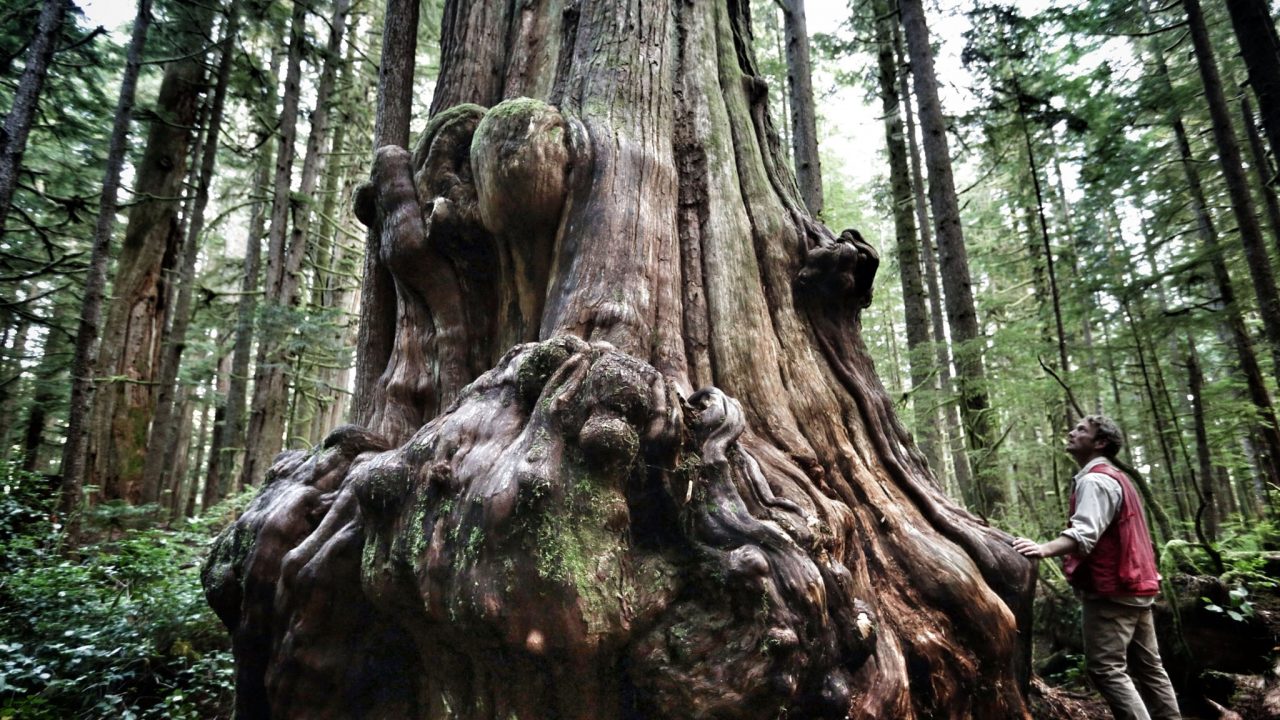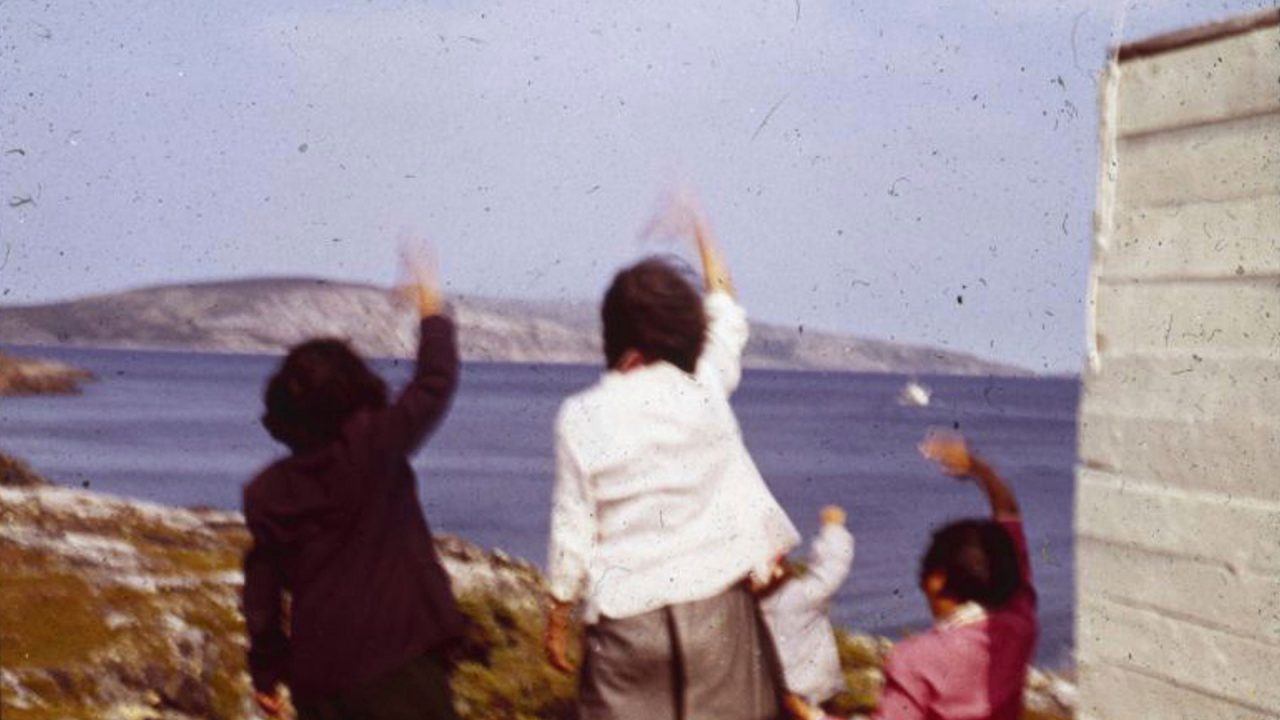
Mini-Lesson for Hadwin’s Judgement
Mini-Lesson for Hadwin’s Judgement
Mini-Lesson for Hadwin’s Judgement
Themes: Logging Industry, Environmentalism, Stewardship, Sustainability, Deforestation
Ages: 15-17
Hadwin’s Judgement, Sasha Snow, provided by the National Film Board of Canada
Keywords/Topics: Haida People, Rainforests, Golden Spruce, Timber Industry in B.C., Clear-cutting, Sustainability, Stewardship
Guiding Question: Grant Hadwin had hoped the cutting down of the unique and sacred Golden Spruce would be seen as a symbolic and heroic act that would save the forest. Did Hadwin’s motive justify his extreme actions? Is Hadwin a hero, an environmental “terrorist” or a man gone mad?
Summary: In this film, you will see the transformation of a man in conflict with his ingenious ability in the commercial logging industry as an engineer and his love for the temperate overall rainforest of West Coast British Columbia. Hadwin’s internal conflict takes form in the docudrama as he witnesses the forest that he calls home being destroyed faster than he could have ever imagined. Despite the fact that he loved his job in the logging industry, he hated the end result. As his protests repeatedly fall on deaf ears, he turns to a desperate symbolic act that he thought would stir change but instead infuriates people, and he becomes known as an environmental “terrorist.”
Activity #1
Develop a character sketch of Hadwin to further understand the internal conflict that he faced and what might have led him to such an extreme act as the slaughtering of the Golden Spruce.
Sketch the outline of a person, and within it, answer the following questions:
- Head: What does Hadwin think about the world we live in?
- Eyes and ears: What has he seen and heard?
- Mouth: What does he say?
- Heart: What are some of Hadwin’s feelings and worries?
- Hands and feet: What actions and choices does he make?
Continue to add to this character sketch as you watch further segments.
Go Deeper
Hadwin’s dilemma is not unique. In our society, we often measure success by our material wealth, and as a result we ignore the consequences our possessions have on the environment. However, unlike Hadwin, it is easy for us to turn away, as we do not often see the direct effect our way of life is having. Reflect on your lifestyle and how it conflicts with your love for the world we live in. Think about something you love from the natural world (i.e. wildlife, plants/flowers, hiking, fishing, swimming in the lake, etc.) and how it is being threatened by our daily actions.
Activity #2
The logging industry’s anthropocentric perspective and the Indigenous kincentric perspective are two very contrasting ideas presented in this clip.
Create a Venn diagram to compare and contrast the two perspectives. Then critique each perspective:
- Are the perspectives realistic? What problems might the perspectives pose?
- What is the root cause or nature of those problems?
- Are there solutions to the problems?
- Rate each problem on a scale of 1 to 10 (1 = big problem, 10 = minor problem).
- Is there an alternative to these two perspectives? Is there a need to compromise between the two perspectives?
Go Deeper
Examine both stakeholders—the logging company and Indigenous peoples—from the four geographical perspectives (i.e. social, political, environmental and economic). Share your ideas in a debate format. You will have the opportunity to change your perspective through the debate process.
Activity #3
Based on the letter in this clip, it appears that Hadwin’s intention was not to hurt the Haida people but the logging industry. In Hadwin’s eyes, the protection of the Golden Spruce and the five hectares around it by the logging industry was a contradiction of everything the industry stood for. Thus, his motive was to harm the one tree the logging industry was trying to protect in the hopes of preserving all the rest. However, the Golden Spruce’s majesty and unique golden glow was revered by many people, in particular the Haida.
- The Haida people, who have a kincentric perspective that respects all life and who are cautious when taking any life, deem Hadwin’s actions to be no different than the logging company’s. Do you agree?
- Why couldn’t people see past the death of the Golden Spruce and perceive Hadwin’s intended message?
Go Deeper
Examine Hadwin, the logging industry and the Indigenous perspective on this issue. After careful examination of all sides, write your own judgment on Hadwin. Did his motive justify his extreme action? Is Grant Hadwin a hero, an environmental “terrorist” or a man gone mad?
Activity #4
The oral tradition and storytelling play a significant role among the Indigenous people as lessons for future generations. In this clip, you are introduced to the story of the Golden Spruce. Analyze the legend using the following questions for a guided discussion:
- What belief system, culture or customs of the Haida people are revealed in this story?
- What is the intended lesson?
- How has Western society ignored this lesson?
- Why do people continue to ignore this lesson despite knowing the consequences of their actions?
Go Deeper
Create your own story using modern-day events to explain to future generations the importance of sustainability. These stories can be written down, illustrated or presented in dramatic form to the class.
Beverly Cameli has a genuine passion for teaching. Over the last two decades she has taught a variety of subjects, including English, geography, history, politics, world religions, anthropology, psychology, and sociology. As an undergraduate, she had the opportunity to study the Holocaust alongside German and Polish students abroad; she went on to complete a master’s degree in sociology and equality studies at the University of Toronto. She works to inspire her students to be active citizens of a thriving planet where all people are treated equally.
Pour lire cet article en français, cliquez ici.
Discover more Mini-Lessons | Watch educational films on NFB Education | Watch educational playlists on NFB Education | Follow NFB Education on Facebook | Follow NFB Education on Pinterest | Subscribe to the NFB Education Newsletter



